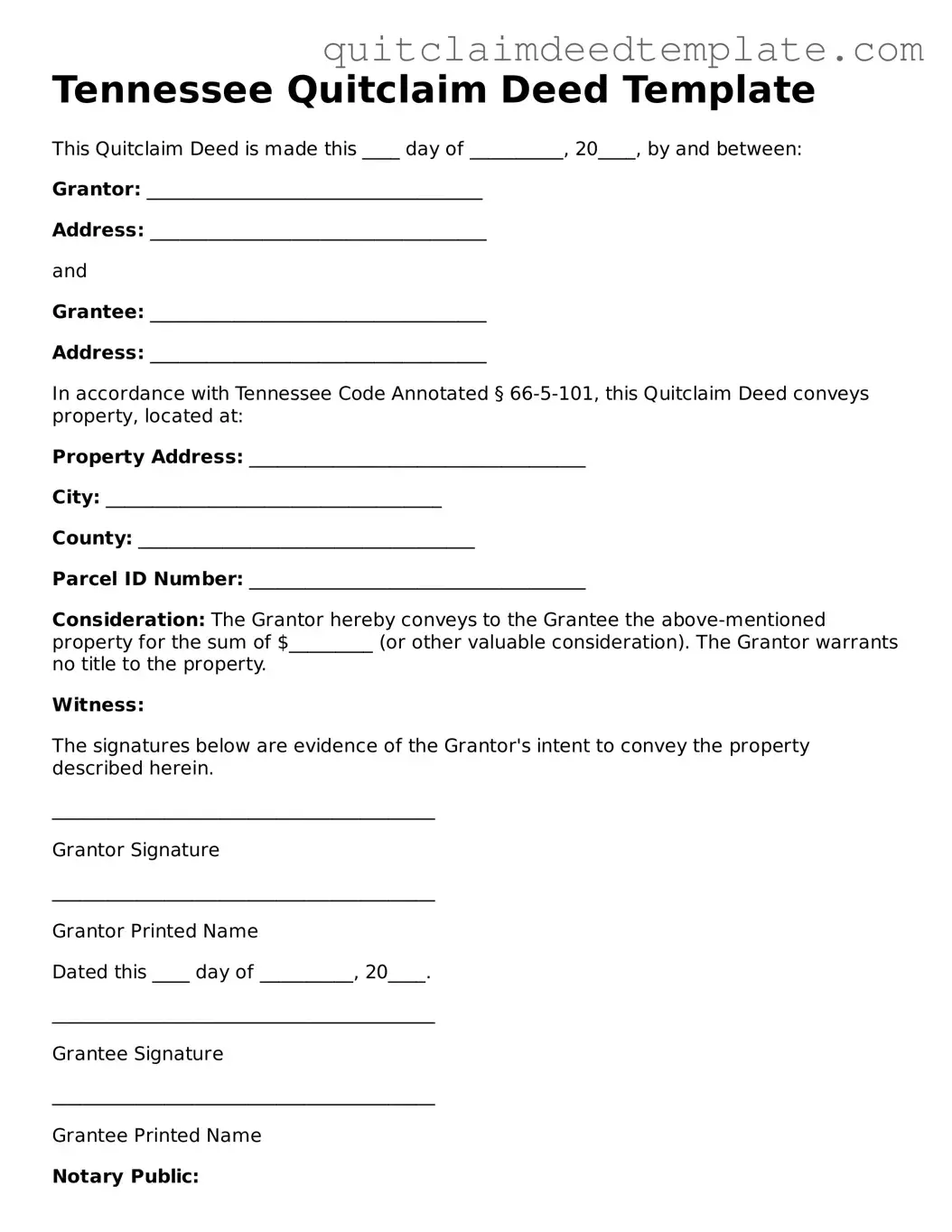Documents used along the form
The Tennessee Quitclaim Deed is a legal document used to transfer ownership of real property from one party to another without guaranteeing that the title is clear. When executing a quitclaim deed, it is often beneficial to accompany it with additional forms and documents to ensure a smooth transfer process. Below are several commonly used documents that may accompany a quitclaim deed in Tennessee.
- Title Search Report: This document provides a detailed history of the property’s title, including any liens, encumbrances, or claims against it. A title search helps the parties involved understand the current status of the property title before the transfer occurs.
- Affidavit of Title: This is a sworn statement by the seller affirming that they hold clear title to the property and that there are no outstanding claims or legal issues related to it. This document can help reassure the buyer about the legitimacy of the transaction.
- Property Transfer Tax Declaration: In Tennessee, this form may be required to report the transfer of property for tax purposes. It provides information about the sale price and the parties involved, ensuring that the appropriate taxes are assessed.
- Notarization Certificate: A notarization certificate is often included to verify the identities of the parties involved in the quitclaim deed. This document ensures that the signatures on the deed are authentic and legally binding.
Including these documents alongside the Tennessee Quitclaim Deed can help facilitate a more transparent and legally sound property transfer. Each document plays a specific role in protecting the interests of both the buyer and the seller during the transaction process.
